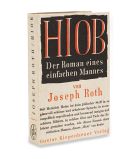
Historicism
Historicism, in the broadest sense, means the recourse to historical style, which was also utilized during the Renaissance, for example. Normally, however, this term is understood to mean the more narrow characterization and stylistic pluralism in the second half of the 19th century, which in turn can be differentiated into the so-called neostyles (Neo-Romanticism, Neo-Gothic, Neo-Renaissance, Neo-Baroque, etc.). When these styles are intermixed, one also speaks of Eclecticism.
During this period, several nations defined themselves anew, and in search for a national style, historicism played a leading role; typical here is Heinrich Hübsch’s work, In welchem Style sollen wir bauen [In What Style Should We Build]. The origins of historicism lie both in Romanticism, in which national consciousness and interest for the Middle Ages was awakened, and also in classicism, in which one used elements from the Antique. The main carrier of historicism was architecture: the historical styles that were rediscovered were employed contemporaneously and choreographed for certain statements: in this way, Gothic elements were used for residences; for banks, theaters and museums, on the other hand, the Neo-renaissance was chosen. Well-to-do citizens prefered the forms of the Neo-Baroque style for their homes.
Industrialization, through manufacture of new materials, made new construction possibilities available; even so, these were not shown openly, but were rather hidden behind the masking facades of Neostyle. The application of the style of a past epoch on new and for the most part larger buildings often resulted in a certain conscious strictness to such an extent that the proportions were no longer in harmony and the repertory of forms had to be repeated. Engineering architecture is, however, an exception. The reduction of the cost of producing crude iron resulted in the use of cast-iron as a building material. Here, Paxton’s Crystal Palace from 1851 at the first World Exhibition, or the Eiffel Tower at the Paris Universal Exhibition in 1889 are definitive examples. Eugène Viollet le Duc finally combined the new material with Gothic shapes.
Industrialization also played an important role in the applied arts. On the one hand, the retreat into old tried and true forms is a conscious reaction against the unreal and stereotype-reinforcing mass production of industry; on the other, however, it is precisely machine production that allows one to produce everyday objects in the styles imitated at reasonable prices.
In painting, historicism shows up in the categories of the Nazarene movement and the Pre-Raphaelite Brotherhood. Both movements had a thematic interest in medieval legends and literary works.

Would you like to sell a work of Historicism?
Infos for seller






